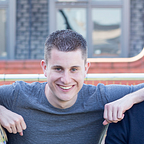Hack-a-John as a ideation method for startups
--
For the last module of our study Digital Media Management @ Hyper Island UK our group has the challenge to build an awesome startup. Since we had no brief, and just five weeks to the deadline we needed to move fast. So we asked ourself ‘How might we create a great startup concept as fast as possible?’.
We answered this question by combining the 1–10–100 method with a hackathon. The 1–10–100 method is an approach to innovation whereby you try to “bring hindsight into design projects and to align research activities with design activities” (Dorst, 2007). This means you split your process into 3 iterations, which contain all the requirements needed for a design research project (research, ideation, prototyping, testing). The numbers are used to indicate the length of each iteration, this means every iteration the length of an iteration multiplies by 10. Although the exact length will vary from project to project of course, we don’t even got 100 days for the total project...
Let’s start!
Since we are a group of 6 we split up into 3 duo’s for the hackathon. Our reasoning was the more groups the better, we wanted to ideate as broad as we could. We gave ourselves 2 days and at the end we gave pitches to our fellow students, who also decided who ‘won’. A bit of gamification here, just to spice the process a bit more!
The hackathon serves as the first iteration (the ‘1’ in 1–10–100), which is a really short iteration just to get going. By forcing yourself to do a whole iteration in one or two days, you end up creating something that is not good enough… And that’s the point! You will end up with something that is purely based on assumptions and ideas that are low hanging fruit.
Aftermath…
After this you should start validating your ideas and reflect. Did we end up with an innovative solution for a real need? This forced us to think, did we make a vitamin or a painkiller? After doing interviews and market research we found out our idea was probably a vitamin (and probably even worse…) and was just not worth pursuing.
Was is worth it then?
Definitely! We externalized our assumptions and first ideas, and as expected that did not result in a good startup. We forced ourself to make mistakes in a short time, mistakes we would have also made if we would have spent more time on it. This due to the fact that our angle (or the pain point we tried to solve) was wrong, and to get it right you need to iterate anyhow. What it did however is get us going. We know better now what we want as a group. It is a bit of a cliche, but:
fail as soon as possible, so you can learn and adapt as soon as possible.
p.s. The name hack-a-john came out of our group’s obsession with the legend himself, Elton John.
Team Tiny Dancers
Davey van der Woert,
Sara Ramos,
Dag Otto Lund Christensen,
Roni Cheung,
Natasha McNamara,
Dominic Burr
